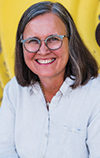One of the biggest fears of founders I coach is the fact they may lose loyal, hard-working employees after the transfer of the farm to the next generation. It doesn’t have to be that way.

Dan Ohler of ESOP Builders recently gave a webinar on how employee share ownership plans (ESOP) work. We’ve been thinking about this on our farm, as we have a fabulous young mechanic who we would like to keep for the next 30 years.
According to Ohler’s statistics, 51 percent of business owners in Canada have no succession plan, and only 9 percent have a formal succession plan.
Would your business be in a pickle if you lost a key employee? It may seem difficult to talk about your finances and personal goals for the future, but I suspect your biggest barrier is: You are afraid of what life might look like after the business is transferred.
Ohler said 75 percent of owners regret the sale of the business 12 months later because they were not emotionally ready to let go, they paid too much tax, and they didn’t take enough time to plan their retirement.
That is why I suggest farmers use the concept of “re-invention,” test out some of the things they would like to do and still have a semi-active role in the farm business. Their transition is a role change, not a total “goodbye” to the farm.
An ESOP would allow my key employee to have long-term value growth and purchase part of an ownership interest in the farm he works hard at.
What are the benefits of an ESOP?
- The founder can exit on his or her own time. It can be planned out in stages of letting go.
- There may be instant liquidity with a potential for increased growth and profitability as employees purchase shares and are now part-owners and committed to the long-term success of the farm.
- As co-owners, employees share the risks and rewards of the business, and they also become clearer about the financial transparency that impacts their work.
- You’re not Scrooge; you are enabled by your ESOP to share success with your valued employees.
The process is done through one, or a combination of, the following alternatives: selling equity shares, selling equity value units (treated like a share) and share options.
(The employee is given a right to buy shares in the future at today’s price.) ESOP Builders uses a transformational two-stage model – a three- to four-week feasibility study followed by a three- to six-month design, training and implementation. This ensures the ESOP is designed specifically for your unique operation and based on your goals and desires.
Ohler said, “Communication and culture are critical” to the process of share transfer to ensure the transition is successful. The leadership team must be keen about the process.
There also needs to be an independent valuation of the company or farm by an outside person. This builds trust and establishes benchmarks for the future.
“People support what they help to create,” Ohler said. On our farm, we have worked hard to create a culture of collaborative decision-making, where every employee and shareholder has a voice in the way things are done.
It would be even more powerful if the non-family employees felt like the harder they worked, the better the financial gain for their family as well.
Companies that have ESOP plans have:
-
An engaged workforce and increased recruiting power. What would that look like for your farm labour force if you were really attractive to new labour?
-
More productivity, possibly 20 percent higher, according to Ohler’s research.
-
Decreased turnover. High turnover is costly and stressful. I see this in farm families where the culture of conflict drives great employees away.
-
Increased innovation and creativity as all of the owners are open to new and better ways of accomplishing the farm’s goals. When employees are part-owners, they take pride in their work and have a voice for creating change.
- Increased job satisfaction. We all want to get out of bed for a vocation that gives us meaning and purpose. When you do your job well and reap the benefits of growth, it is a win-win.
But Ohler is also clear: You need to recognize the risks of using an employee ownership plan:
-
It could fail, but Ohler did share research indicating ESOPs have an 80 percent success rate.
-
There is a limited market for selling shares. Ohler said an annual internal “mini-market” provides some liquidity. Shares can also be sold back to the company.
-
You have to comply with tax laws, which do change occasionally.
-
Share dilution can occur. If more people join the plan, there could be a dilution of the percentage or value of the shares an employee owns.
-
The administrator may terminate the plan.
- Unforeseen economic changes may put pressure on the plan.
I know when our successor son started to own assets, he became highly attuned to the risks he needed to manage. Ownership creates accountability and desire to protect assets and create more growth opportunities.
Please take the time to check out if employee share ownership plans are a good fit for your farm. December is usually a time of taking stock and seeing if there is room for “bonuses” to employees as a gift at year-end.
Perhaps this year you can start the conversation about a lasting way to engage your key employees for life. That concept will scare the Scrooges away. ![]()
See more at Succession Matching and ESOP Builders.
Elaine Froese wishes all of her readers joy and peace in their homes. Visit Elaine Froese or
Twitter, like “Farm Family Coach” on Facebook.

-
Elaine Froese
- CSP, CAFA, CHICoach
- Boissevain, Manitoba
- Email Elaine Froese









